Saga Prefecture | A Quiet Industrial Region Rooted in Traditional Crafts and Coastal Fisheries

Saga Prefecture | A Quiet Industrial Region Rooted in Traditional Crafts and Coastal Fisheries
Located in the northwestern part of Kyushu, Saga Prefecture is a region where nature and industry coexist, making use of its geographical position along the Ariake Sea and Genkai Sea.
Saga is particularly known for its world-renowned ceramics, including Arita-yaki and Imari-yaki, which boast a history dating back to the early 17th century. Even today, skilled artisans continue to produce works that blend traditional techniques with contemporary aesthetics, earning acclaim both in Japan and abroad.
Along the expansive tidal flats of the Ariake Sea, rich marine resources such as nori seaweed and mudskippers support a unique fishing culture. Traditional fishing methods, developed in harmony with the sea’s ebb and flow, remain an essential part of the local lifestyle and culinary traditions.
Saga is also home to archaeological landmarks such as the Yoshinogari Ruins and historical townscapes like Hizen Hamashuku, which offer insight into the region’s long history and human activity.
With its natural resources and time-honored industries, Saga Prefecture is characterized by its distinctive cultural heritage, including ceramics and coastal livelihoods, making it a region rich in both history and everyday tradition.
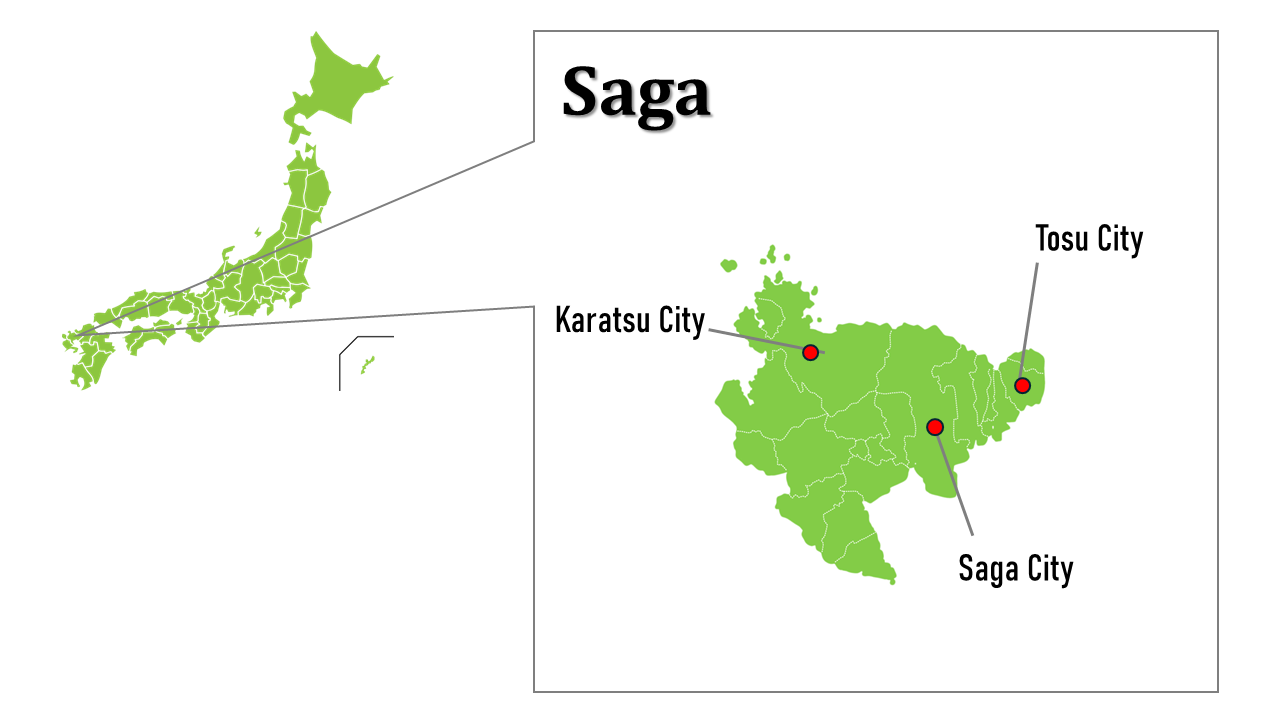
- Saga City
- Saga city
- Karatsu city
- Tosu city
- Approximately 0.8 million
- Ureshino Onsen
- Takeo Onsen
- Karatsu Castle
- Arita Ceramic Fair
- Yobuko Ika Sashimi (Live Squid Sashimi)
- Saga Beef
- Arita Ware
- Imari Ware
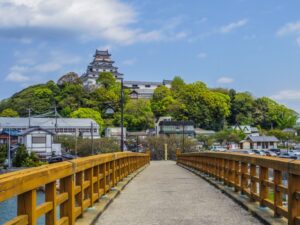
Karatsu Castle — A picturesque castle in Maizuru Park, offering sweeping views of the sea and the town below.
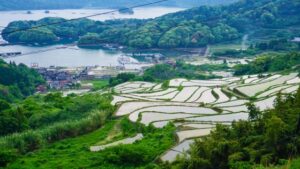
Terraced rice fields of Ōura, Karatsu — These scenic paddies cascading down toward the sea create a breathtaking view that changes with the seasons.
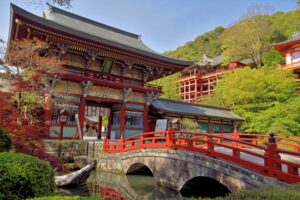
Yūtoku Inari Shrine “Rōmon” – A magnificent vermilion gate adorned with lavish decorative details.

Yoshinogari Ruins – Japan’s largest moated settlement site, offering a glimpse into daily life during the Yayoi period.
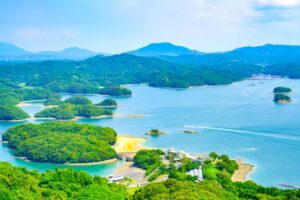
Iroha Islands in Hizen, Karatsu — A scattered cluster of small islands that resemble colorful confetti across the sea.
